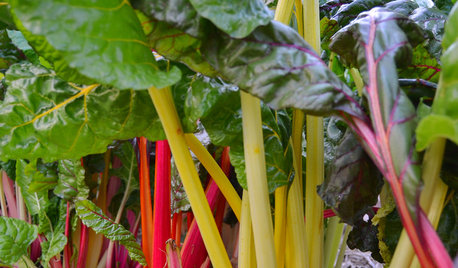Fall Vegetable Garden Clean-up and WEEDS
Spyjackson
9 years ago
Related Stories

FALL GARDENING7 Reasons Not to Clean Up Your Fall Garden
Before you pluck and rake, consider wildlife, the health of your plants and your own right to relax
Full Story
EDIBLE GARDENSNatural Ways to Get Rid of Weeds in Your Garden
Use these techniques to help prevent the spread of weeds and to learn about your soil
Full Story
GARDENING GUIDESTackle Weeds the Natural Way
Instead of dousing your yard with chemicals to wipe out weeds, let time and nature work their magic via smothering and solarization
Full Story
FARM YOUR YARD9 Ways to Change Up Your Vegetable Garden for the Coming Season
Try something new for edible plantings that are more productive than ever
Full Story
GARDENING GUIDES5 Ways to Naturally Win the Weed War
Show irksome weeds no mercy with these tricks for combating them sans chemicals
Full Story
GARDENING GUIDESLet's Weed Out 4 Native Plant Myths
Plant wisely for a garden that supports pollinators and requires less work
Full Story
GARDENING GUIDESCool-Season Vegetables: How to Grow Chard
A year-round garden favorite with a colorful stem, Swiss chard comes into its own in early spring and in fall
Full Story
GARDENING GUIDES5 Weed-Smothering Ground Covers
Let these landscape plants do the dirty work of choking out weeds while you sit back and enjoy the view
Full Story
COOL-SEASON CROPSCool-Season Vegetables: How to Grow Chinese Cabbage
Napa cabbage, pak choi, bok choy — no matter what you call it, this edible is a good candidate for fall and spring gardens
Full Story0

FLOWERSGreat Design Plant: Joe Pye Weed
This unsung beauty tolerates wet soil, provides beautiful late summer blooms and attracts butterflies and hummingbirds
Full StorySponsored
Your Industry Leading Flooring Refinishers & Installers in Columbus
More Discussions







gardengal48 (PNW Z8/9)
beesneeds
Related Professionals
Garden City Landscape Architects & Landscape Designers · Rancho Cordova Landscape Architects & Landscape Designers · Rancho Palos Verdes Landscape Architects & Landscape Designers · Maple Heights Landscape Architects & Landscape Designers · Coram Landscape Contractors · Fort Mill Landscape Contractors · Fort Wayne Landscape Contractors · Fountain Valley Landscape Contractors · Mendota Heights Landscape Contractors · Vadnais Heights Landscape Contractors · Framingham Decks, Patios & Outdoor Enclosures · Franconia Decks, Patios & Outdoor Enclosures · Lake Morton-Berrydale Decks, Patios & Outdoor Enclosures · Lancaster Decks, Patios & Outdoor Enclosures · Canyon Lake Stone, Pavers & Concreteelisa_z5
Lloyd
Kimmsr
maplerbirch
NHBabs z4b-5a NH